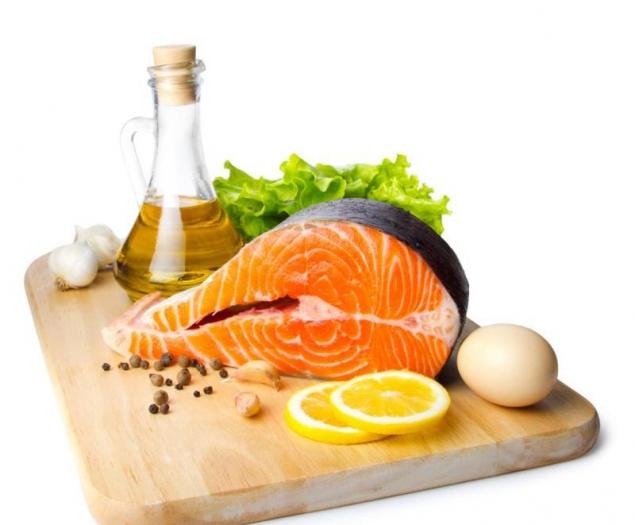500
What is the use of essential fatty acids
Essential fatty acids (EFAS) occupy most of the composition of the protective membrane of any cell. This is a vital source of energy for any organism, during the process of splitting they produce energy and are necessary for normal metabolism.
Due to the fact that essential fatty acids are not synthesized in our body, their deficiency leads to serious health problems. In addition, they are the building blocks of fatty tissue that covers and protects internal organs.
The amount of EFAS in our body directly depends on how much fats and oils we eat.

The MOST IMPORTANT EFAS arethe Most valuable essential fatty acids are acids of the family of alpha-linolenic acid and the omega-3 family linolenic acid omega-6. They also serve as sources of synthesis of other essential fatty acids.
OMEGA-3 FATTY ACIDSWith a lack of alpha-linolenic acid are progressing eye disease, increased muscle weakness, numb hands and feet, slowed growth, and then depression.
And most importantly, the shortage of omega-3 fatty acids leads to the development of the most common diseases of the heart (atherosclerosis), diseases of the brain (stroke), diseases of the joints (arthritis and arthrosis).
FOODS THAT CONTAIN OMEGA-3 ACIDalpha-linolenic acid in large quantities is contained in linseed oil, pumpkin seeds, soybeans, walnuts and vegetables with dark green leaves. But the richest source of omega-3 acid is fish oil and fatty fish with scales of a dark color such as mackerel, herring, sardines, salmon, halibut, perch, carp.
Important! People suffering from unstable angina and congestive heart failure should not take omega-3 fatty acids (fish oil), as it can increase the risk of sudden cardiac death.
OMEGA-6 FATTY ACIDS
Lack of linoleic acid in the body can cause diseases of the skin (eczema), hair loss, liver problems, nerve system disorders, infertility, heart disease and blood vessels.
FOODS THAT CONTAIN OMEGA-6 ACIDSmost omega-6 fatty acids contain animal fats and vegetable oils: soy, pumpkin, flax, corn, sunflower, but the biggest source is safflower oil. As well as nuts, eggs, butter, avocado, poultry.
Remember that essential fatty acid not synthesized in our body, so it is important to ration our food they acted in sufficient quantity to prevent the development of various diseases.
It is also worth noting that the modern diet includes large amounts of omega-6 and insufficient omega-3 fatty acids. Omega-6 fatty acids in excess may also trigger the development of atherosclerosis, asthma, arthritis, vascular disease, thrombosis, immune-inflammatory responses and proliferation of tumors. To solve this problem, you must increase in your diet the proportion of omega-3 to omega-6.published Author: Alain Yasneva
P. S. And remember, only by changing their consumption — together we change the world! ©
Join us in Facebook , Vkontakte, Odnoklassniki
Source: zdorovyda.ru/nezamenimyie-zhirnyie-kislotyi-soderzhanie-v-produktah/
Due to the fact that essential fatty acids are not synthesized in our body, their deficiency leads to serious health problems. In addition, they are the building blocks of fatty tissue that covers and protects internal organs.
The amount of EFAS in our body directly depends on how much fats and oils we eat.

The MOST IMPORTANT EFAS arethe Most valuable essential fatty acids are acids of the family of alpha-linolenic acid and the omega-3 family linolenic acid omega-6. They also serve as sources of synthesis of other essential fatty acids.
OMEGA-3 FATTY ACIDSWith a lack of alpha-linolenic acid are progressing eye disease, increased muscle weakness, numb hands and feet, slowed growth, and then depression.
And most importantly, the shortage of omega-3 fatty acids leads to the development of the most common diseases of the heart (atherosclerosis), diseases of the brain (stroke), diseases of the joints (arthritis and arthrosis).
FOODS THAT CONTAIN OMEGA-3 ACIDalpha-linolenic acid in large quantities is contained in linseed oil, pumpkin seeds, soybeans, walnuts and vegetables with dark green leaves. But the richest source of omega-3 acid is fish oil and fatty fish with scales of a dark color such as mackerel, herring, sardines, salmon, halibut, perch, carp.
Important! People suffering from unstable angina and congestive heart failure should not take omega-3 fatty acids (fish oil), as it can increase the risk of sudden cardiac death.
OMEGA-6 FATTY ACIDS
Lack of linoleic acid in the body can cause diseases of the skin (eczema), hair loss, liver problems, nerve system disorders, infertility, heart disease and blood vessels.
FOODS THAT CONTAIN OMEGA-6 ACIDSmost omega-6 fatty acids contain animal fats and vegetable oils: soy, pumpkin, flax, corn, sunflower, but the biggest source is safflower oil. As well as nuts, eggs, butter, avocado, poultry.
Remember that essential fatty acid not synthesized in our body, so it is important to ration our food they acted in sufficient quantity to prevent the development of various diseases.
It is also worth noting that the modern diet includes large amounts of omega-6 and insufficient omega-3 fatty acids. Omega-6 fatty acids in excess may also trigger the development of atherosclerosis, asthma, arthritis, vascular disease, thrombosis, immune-inflammatory responses and proliferation of tumors. To solve this problem, you must increase in your diet the proportion of omega-3 to omega-6.published Author: Alain Yasneva
P. S. And remember, only by changing their consumption — together we change the world! ©
Join us in Facebook , Vkontakte, Odnoklassniki
Source: zdorovyda.ru/nezamenimyie-zhirnyie-kislotyi-soderzhanie-v-produktah/























